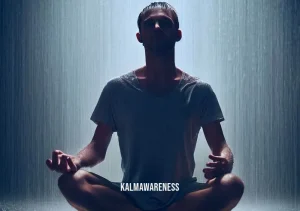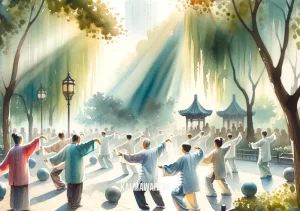The Transformative Power of Sensory Writing Prompts
Creative writing is a journey of self-exploration and self-expression. Whether you’re an established writer or someone just beginning their journey, sensory writing prompts provide a unique and enlightening approach to ignite your passion for words. With our senses as the gateway to our experiences and emotions, integrating sensory observations into our writing can lead to richer, more evocative expressions. This article delves deep into the world of sensory writing and its connections with expressive writing, mindful writing, and self-expression.
Why Sensory Writing Prompts?
Human experiences are deeply tied to our senses. The aroma of a childhood dish can instantly transport us back to our grandmother’s kitchen, or the sound of a particular song can evoke memories from a past summer. These sensory experiences, when captured in words, resonate deeply with readers, creating a vivid and relatable narrative. But how do we tap into these sensory reservoirs? The answer lies in sensory writing prompts.
Expressive Writing and The Power of Self-Expression
Expressive writing, as elucidated in the mindful-creative approach, emphasizes the therapeutic benefits of articulating our thoughts, emotions, and experiences. It’s more than just words on paper; it’s a cathartic process, allowing writers to confront and process complex feelings.
As one explores the depths of expressive writing, it becomes evident how vital self-expression is. It’s not just about narrating an event; it’s about channeling our emotions, our fears, our hopes, and our dreams. One might even look in the mirror and ask, ‘what’s up?’, hoping to confront and understand their inner self better.
Mindful Writing: An Introspective Journey
Mindfulness, often associated with meditation and self-awareness, also has its place in the realm of writing. Mindful writing is about being present in the moment, keenly observing our surroundings, and drawing inspiration from the smallest of details. It’s about being calm in cursive and channeling our observations into words with intent and purpose.
This approach encourages writers to be aware, not just of their external environment, but also their internal emotional landscape. It’s a reclamation of our sentences, focusing on authenticity and genuine expression.
Sensory Exploration: A New Dimension to Creativity and Inspiration
The core of sensory writing lies in exploration. It’s about immersing oneself in experiences, savoring every sight, sound, touch, taste, and smell. This form of sensory exploration paves the way for a deeper connection between the writer and their environment. The environment becomes more than just a backdrop; it becomes a character, an entity with its emotions and stories.
Such exploration fosters creativity. It’s like watching your step and feeling yourself in the most profound ways, being attuned to the world’s nuances. The richness of sensory details brings stories to life, making them palpable and immersive for the reader.
In Conclusion
The journey of writing, when combined with sensory exploration, becomes a transformative experience. It’s a confluence of self-expression, mindfulness, and profound observation. Sensory writing prompts act as catalysts, propelling writers into a world of vivid imaginations and heartfelt narratives.
As we delve deeper into this topic in the subsequent segments, we’ll uncover the nuances of sensory writing, offer prompts to kickstart your journey, and explore the therapeutic and artistic benefits of such an approach. To embark on this enlightening journey and truly experience the magic of sensory exploration in writing, continue reading in the next segment.

Harnessing the Five Senses with Sensory Writing Prompts
Sensory prompts challenge us to engage deeply with our environment, pushing us to recognize and articulate the subtleties that often go unnoticed. The beauty of these prompts lies in their ability to transcend standard descriptive writing, offering writers a way to truly immerse readers in their world. In this chapter, we dive into the intricacies of sensory prompts, offering a comprehensive guide to incorporating each of our five senses into your writing.
The Evocative Power of Sensory Descriptors
When writing, it’s easy to fall back on familiar descriptors. But sensory writing prompts push us to think outside the box, to dig deeper and find the words that truly capture an experience. It’s about moving beyond saying a cake is ‘delicious’ and describing the velvety texture, the tantalizing aroma, and the explosion of flavors with every bite. By pushing ourselves to find these precise descriptors, our writing becomes more vivid, relatable, and impactful.
Unearthing Inspiration from Within
Often, we seek inspiration externally, waiting for the muse to strike. But what if we looked inward? The masks we wear often shield our most authentic thoughts. By peeling back these layers and engaging in sensory exploration, we unearth raw, genuine emotions waiting to be articulated. Sensory prompts, thus, act as a conduit, allowing us to channel these internal sensations and weave them seamlessly into our narratives.
Guided Lists for Sensory Exploration
To truly harness the power of sensory prompts, it helps to have a structured approach. Here’s a guided list to help you embark on this sensory journey:
Visual Prompts:
- A sunset melting into twilight.
- The dance of shadows on a windy day.
- The humble drawing of a child, filled with innocent aspirations.
Auditory Prompts:
- The rhythmic hum of a city at dawn.
- The gentle whisper of leaves, narrating tales of seasons gone by.
- The chakra voice resonating, offering a spiritual awakening.
Tactile Prompts:
- The coarse texture of a worn-out diary.
- The comforting warmth of a woven blanket during winter.
- The reassuring grip of a hand, symbolizing a person with a great love for mirrors, reflecting both the self and the external world.
Olfactory Prompts:
- The invigorating scent of fresh rain on parched soil.
- The nostalgic aroma of a childhood perfume.
- The wounded inner child art, evoking memories through scent triggers.
Gustatory Prompts:
- The spicy tang of an exotic dish, transporting you to a distant land.
- The sweet nostalgia of grandma’s apple pie.
- The bittersweet flavor of a chakra associated with shoulder pain, revealing layers of emotion.
Tabulated Sensory Prompt Overview
| Sense | Descriptor | Example Prompt | Emotional Resonance |
|---|---|---|---|
| Visual | Vibrant | A carnival illuminated at night. | Euphoria, excitement |
| Auditory | Resonating | The haunting lullaby from a distant past. | Nostalgia, longing |
| Tactile | Rough | Sandpaper against skin, signaling embracing cringe. | Discomfort, anticipation |
| Olfactory | Musky | The scent of old books in an ancient library. | Curiosity, wonder |
| Gustatory | Salty | Tasting tears during an emotional epiphany. | Sadness, catharsis |
Looking Ahead
Sensory writing prompts are more than just tools; they’re gateways, guiding writers to explore both their internal and external worlds with heightened sensitivity. As you embrace this approach, you’ll find your writing resonating with a depth and authenticity that captivates readers.
As we venture further in the next chapter, we’ll delve into practical exercises to hone your sensory writing skills and introduce advanced techniques to elevate your narrative. So, if you’re eager to elevate your writing prowess and weave sensory magic into your words, continue reading.

Unearthing Hope Through Sensory Writing Prompts
The journey of writing is often likened to the quest for self-discovery, a tool to understand and communicate the deepest recesses of our hearts. Sensory writing prompts magnify this expedition by aligning the heart’s cadence with the symphony of the senses. In this chapter, we will journey together to find inspiration in the mundane, the remarkable, and the spaces in-between, all through the prism of sensory writing.
The Symphony of Inspiration in Every Sense
In the realm of expressive writing, where emotions are the pen’s ink, inspiration is the quill itself. But how often do we pause to find inspiration in the senses? The little girl talking to herself in the mirror, the scent of a calm in cursive note lingering in the air, or the taste of victory after taking a stand for what you believe in, all these moments are sensory treasures waiting to be penned down.
Quotable Insights on Sensory Inspiration
Capturing the essence of sensory writing in words, various thought leaders and authors have shed light on its transformative power. Here are a few quotes that resonate deeply:
- “To write is to feel the world pulse within one’s fingertips. Every sound, sight, taste, touch, and scent carries a story.”
- “In the world of sensory writing, every whisper of the wind, every reflection in the mirror, holds a universe of emotions.”
- “Emotions are abstract until you taste them, touch them, see them, hear them, or smell them. That’s the magic of sensory writing.”
Real-Life Inspirations: Case Studies on Sensory Writing
- Case Study: Sarah’s Reclamation
Sarah, a middle-aged woman, had lost touch with her surroundings, wrapped up in the whirlwind of her daily life. It was only when she stumbled upon a sensory writing prompt about reclaiming oneself that she paused. She wrote about the taste of her mother’s homemade pie, the scent of her childhood garden after rain, and the sounds of her city at dawn. This exercise not only reconnected her with her past but also made her more mindful of her present.
- Case Study: Mike’s Awakening
Mike, a retired veteran, was struggling with communicating his experiences. The sounds and sights of his past haunted him. He then found solace in mindful creative writing, focusing on sensory prompts. By channeling his memories through sensory writing, Mike started not only to heal but to understand the weight of his past, finding a channel for self-expression.
- Case Study: Aisha’s Joyful Rediscovery
Aisha, a young student, often felt disconnected from her peers. She found comfort in letting her goofy side shine. Through sensory writing prompts, she began describing the world as she perceived it, from the vibrant colors of a carnival to the soothing rhythm of a lullaby. This approach not only improved her writing but also boosted her confidence in her unique perspective.
Charting the Path Ahead
As we traverse the intricate web of emotions and sensory perceptions, it’s essential to remember the innate power of sensory writing prompts. These prompts are not merely tools but bridges—connecting experiences, memories, emotions, and the vast expanse of the world around us.
In the subsequent chapter, we’ll delve into the techniques and methods to refine and master the art of sensory writing, ensuring that each word you pen resonates with profound authenticity and depth. If you’re geared up to transform your writing journey and immerse deeper into the sensory realm, continue reading.

The Anatomy of Sensory Writing Prompts
Sensory writing is an intricate dance between experience and expression. By delving into the senses, writers create a vivid tapestry of emotions and events, painting pictures with words that readers can almost touch, taste, see, hear, and smell. In this chapter, let’s break down the science and art of sensory writing prompts, so you can grasp their depth and intricacies.
The Five Pillars of Sensory Writing
Each sense plays a pivotal role in enriching our life experiences. Tapping into these can elevate writing to an immersive art. Let’s deconstruct them:
- Sight: The most dominant of all senses for many, this involves describing visual elements.
- Example Prompt: Describe the appearance of someone who has just realized they’ve made a significant reflection about their life.
- Hearing: This sense encompasses the soundscape of an environment.
- Example Prompt: Narrate the cacophony in a busy marketplace or the harmonious voice of someone singing.
- Touch: An essential tool to convey texture, temperature, and physical sensations.
- Example Prompt: Share the feeling of tracing words on a paper with cursive writing.
- Taste: Used less frequently but can powerfully depict experiences, particularly in food and drink narratives.
- Example Prompt: Write about the flavor of a dish that reminds you of a nostalgic event.
- Smell: A potent sense that can invoke strong memories and emotions.
- Example Prompt: Capture the aroma in an old bookstore or the scent that reminds you of a person who loves mirrors and their reflection.
Crafting Effective Sensory Writing Prompts
To make the most of sensory writing prompts, consider these steps:
Clarity is Key: Ensure that the prompt is clear, guiding writers without stifling their creativity.
Embrace Specificity: A generic prompt might yield generic results. Dive deep into specifics.
Balance Between Senses: While all senses might not be required, ensure a balanced representation to create a well-rounded narrative.
Provide Context: Sometimes, a background or setting can help steer the narrative. For instance, a prompt related to self-reflection might benefit from some backstory.
Stir Emotions: Engage the writer emotionally. Challenge them, inspire them, or make them reminisce.
Benefits of Sensory Writing Prompts
Sensory writing prompts aren’t just tools; they’re gateways. Here are some benefits:
Boosts Self-Awareness: They push writers to dig deep, leading to introspection and personal growth.
Improves Observation Skills: Such prompts make writers more observant, helping them pick up nuances in everyday life.
Enhances Expressiveness: Sensory writing hones the skill of vivid description, making prose more evocative.
Fosters Mindfulness: Engaging multiple senses in writing can be a meditative experience, leading to greater mindfulness.
Creates Relatable Content: Narratives grounded in sensory experiences resonate with readers, making the content more engaging.
Gearing Up for the Grand Finale
We’ve now delved deep into the world of sensory writing prompts, understanding their anatomy, and appreciating their transformative power. In our final chapter, we’ll tie everything together, exploring advanced techniques and offering hands-on exercises to harness the potential of sensory writing prompts to the fullest. Excited to elevate your writing prowess? Stay with us and continue reading!

Reflections on Sensory Writing Prompts: The Journey and The Destination
As we come to the end of this immersive exploration on sensory writing prompts, it’s time for a moment of introspection. We’ve journeyed through the vibrant world of senses, understanding their profound impact on our creative expressions and the written word.
The Symphony of Senses
In literature and in life, our senses work in harmony, orchestrating experiences that become memories. These memories, when translated into words, breathe life into our narratives. Sensory writing, with its focus on vivid imagery and experiential description, does precisely that. It’s not just about writing; it’s about reclaiming those moments and presenting them in their raw, unfiltered essence.
A Recap of our Odyssey
From understanding the basics of mindful writing to breaking down the nuances of each sense, our voyage has been enlightening. We discussed how sensory prompts can serve as a bridge between memories and self-expression, aiding in self-reflection and personal growth.
Embracing the Authentic Self
One of the most beautiful aspects of sensory writing is its ability to mirror authenticity. By diving deep into sensory experiences, writers not only embrace their authentic selves, but they also inspire readers to do the same. In the dance of words and senses, there’s an unspoken invitation to shed the masks we wear and present our true selves to the world.
What’s Next? A World Awaiting Exploration
While our journey here concludes, the world of sensory writing is vast, awaiting your exploration. Dive deep into your memories, feel each emotion, and let your words flow. And if you ever find yourself stuck or seeking inspiration, remember to come back and revisit these prompts. There’s always a new perspective awaiting discovery.
A Heartfelt Thank You
Dear reader, thank you for embarking on this journey with us. Your curiosity and eagerness to learn have made this exploration even more meaningful. We promise to bring more insightful content, guiding you on various facets of writing and creativity. After all, every step you take towards self-awareness is a step towards a more genuine expression.
Onward and Upward!
Looking for more inspiration and guidance? Dive into our treasure trove of articles and resources. Let the journey of discovery, self-expression, and creativity continue. Until next time, keep writing, keep exploring, and always, always, let your senses guide the way.





